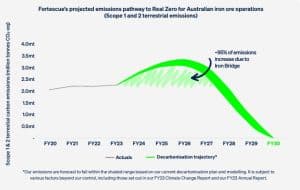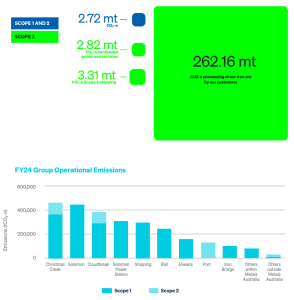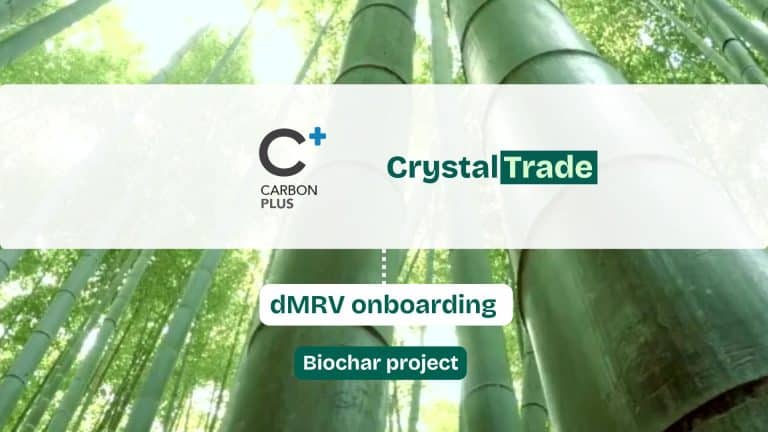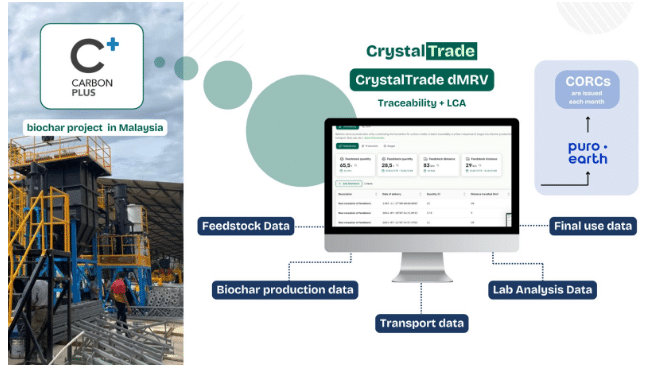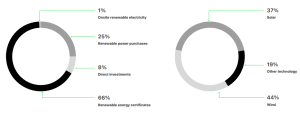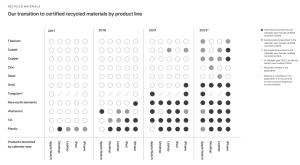Earlier this month, CarbonCredits reported that Sundar Pichai, Google’s CEO, hinted at the possibility of using nuclear energy to help the company reach its ambitious 2030 net-zero emissions target. Confirming those hints, Google officially announced on October 14 a groundbreaking nuclear energy agreement with Kairos Power.
This milestone isn’t just about power. It’s about accelerating a global clean energy transition, ensuring that nuclear becomes a key player in the fight against climate change.
Google Teams Up with Kairos to Tackle Rising Emissions
Google’s push for nuclear power comes at a critical time. In 2023, its greenhouse gas (GHG) emissions rose to 14.3 million metric tons of CO2 equivalent (tCO2e), a 13% increase from the previous year and a 48% jump from 2019. This increase was largely driven by higher energy consumption in data centers, AI, and supply chain emissions. As its energy use grows, emissions reduction is going to be more challenging.

Source: Google
Coming to the main segment, the tech giant has signed the world’s first corporate agreement to purchase nuclear power from small modular reactors (SMRs), designed by Kairos Power.
We unlock the details in the next segment.
Advancing Through PPAs
Under this agreement, Kairos Power will develop, build, and operate advanced reactor plants, supplying clean energy to Google through Power Purchase Agreements (PPAs).
Michael Terrell, Google’s Senior Director of Energy and Climate, said
“This landmark announcement will accelerate the transition to clean energy as Google and Kairos Power look to add 500 MW of new 24/7 carbon-free power to U.S. electricity grids. This agreement is a key part of our effort to commercialize and scale the advanced energy technologies we need to reach our net zero and 24/7 carbon-free energy goals and ensure that more communities benefit from clean and affordable power in the future.”
These plants will be strategically located to power Google’s data centers, with the first SMR deployment expected by 2030. More reactors will roll out by 2035.
The multi-plant agreement will boost innovation by advancing Kairos Power’s demonstration plan. Each new plant will help refine and improve the technology. Furthermore, the pre-determined milestones will keep Kairos Power accountable and ensure proper progress throughout the partnership. This approach will also speed up commercialization and build trust over time.
Mike Laufer, CEO and co-founder of Kairos Power remarked,
“Our partnership with Google will enable Kairos Power to quickly advance down the learning curve as we drive toward cost and schedule certainty for our commercial product. By coming alongside in the development phase, Google is more than just a customer. They are a partner who deeply understands our innovative approach and the potential it can deliver.”
Economic Benefits
Industry experts have estimated that the U.S. could potentially create over 375,000 new jobs by achieving 200 GW of advanced nuclear capacity by 2050. Google’s deal with Kairos Power supports this vision by creating jobs in nuclear technology, construction, and energy sectors.
For local communities, this means more than just employment. The presence of nuclear energy infrastructure can foster economic growth while also contributing to the reduction of carbon emissions. In a world of rising energy demand, reliable, clean power isn’t just a solution—it’s also a powerful driver of economic growth.
A MESSAGE FROM URANIUM ROYALTY CORP.
The Only Pure Play Uranium Royalty Company
Uranium Royalty Corp is the first company to apply the successful royalty and streaming business model exclusively to the uranium sector.
With interests in advanced, permitted and producing uranium projects, the company is well positioned as a capital provider to meet the growing need for uranium as fuel for carbon free, nuclear energy. Learn more about Uranium Royalty Corp’s portfolio of royalty assets and uranium holdings.
Discover their first mover pure-play uranium royalty exposure >>
NASDAQ: UROY | TSX: URC
*** This content was reviewed and approved by Uranium Royalty Corp. and is being disseminated on behalf of Uranium Royalty Corp. by CarbonCredits.com for commercial purposes. ***
________________________________________________________________________
Unlocking Kairos Power’s Innovative SMR Technology
Founded in 2016, Kairos Power takes a unique approach to bringing advanced nuclear technology to market. In 2023, the U.S. Nuclear Regulatory Commission granted Kairos Power a construction permit for its Hermes demonstration reactor. This was the first non-water-cooled reactor approved for construction in over 50 years.
By using a rapid, iterative development process and vertical integration, the company is speeding up the deployment of safe and efficient small modular reactors (SMRs). Their reactors feature a molten-salt cooling system and ceramic pebble-type fuel, ensuring better heat transfer to steam turbines for power generation. Operating at low pressure, this system reduces risks and creates safer, more reliable operations.
Additionally, they conduct multiple hardware tests to identify and resolve potential issues before large-scale deployment. Google’s involvement will help speed up this process, leading to quicker and more cost-effective SMR installations across the U.S.
The Kairos Power FHR (KP-FHR): A Novel Advanced Reactor

Source: Kairos
See more details about this reactor here: Technology – Kairos Power
Why Google Chose SMRs for a Clean Energy Future
Well, many consider nuclear energy as complex and slow to develop. However, new reactors, especially like the SMRs from Kairos Power are changing this concept. Their advanced designs are smaller, simpler, and quicker to build, making them easier to deploy in more locations.
The modular design of these reactors allows for scalability. Instead of a one-size-fits-all approach, these smaller units can be added on to match energy demands. And because they are quicker to build and safer to operate, the timeline to achieving carbon-free energy is shortened significantly. Simply put, the tech giant is investing in nuclear energy that is both safer and more economically viable than traditional reactors.
Secondly, SMRs provide a constant supply of clean energy. Thus, Google believes this partnership is about finding a balance between renewable sources like wind and solar and more constant energy like nuclear, which can ensure reliable power every hour.
Overall, one can infer that this partnership would accelerate clean energy by bringing affordable nuclear power to U.S. grids. As a result, Google can effectively meet rising electricity demands, especially for AI, while advancing its goal of going 24/7 carbon-free energy by 2030.





















